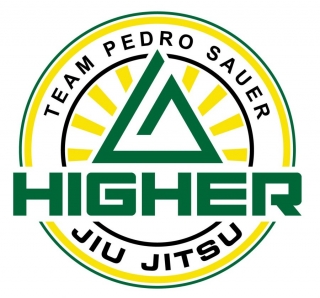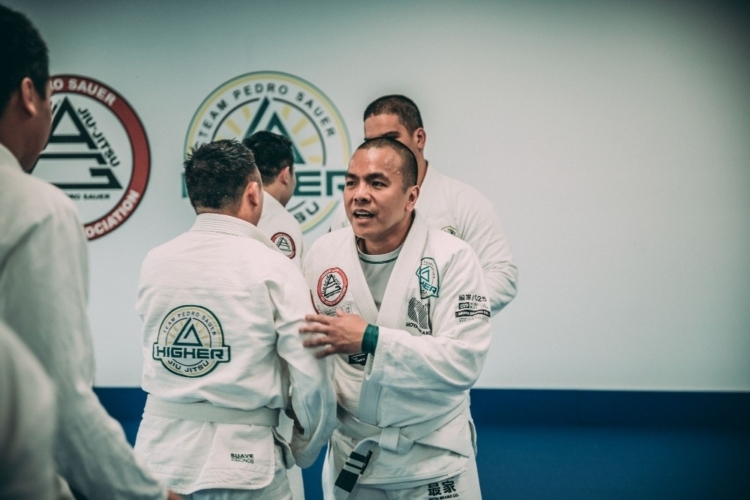So Is It Concepts or Technique?
Eight years ago I had the idea for the Jiu Jitsu Commune.
It was to be a place where BJJ folk around the Sydney CBD came together and trained, and learned from eachother, and rolled in good vibes. We didn’t have a syllabus. For one, everyone was already learning techniques, and knew plenty of techniques. I’d spent my days till purple belt shunning technique anyway, in favour of refining my existing ‘game’.
So instead we went the “concepts” route. I’d talk about a grand, elaborate idea of jiu jitsu and we could then break it down together, and base our class around this one thing. The reference to ‘we’ included everyone in the room.
But then, beginners that had never done jiu jitsu wanted to join in.
Lost in Translation
Of course they were welcomed, but they were also very lost. They didn’t know how to tie their belt let alone engage in meaningful jiu jitsu discussion centered around esoteric concepts that us higher belts were fascinated by.
‘Just sit back and observe’ I’d tell them. I’d pull them aside and begin to show them step by step what we were talking about. But it wasn’t enough. Our newbie friends needed to learn their ABCs first, yet they were amongst complex conceptual discourse right from the outset.
Some coloured belts, especially those who loved thinking for themselves, revelled in the contemplation. Others just wanted to train, and learn, and follow what was being taught rather than guide themselves. This whole ordeal was formed in good intentions, but it was clear that if we were to provide a solid learning environment for all levels, things needed to change.
The Syllabus – It’s Alive!!
Four years on, and we’re now affiliated, we have our very own syllabus (oh my!) Our classes are based on techniques from a curriculum that is easily accessible to all. Most sessions throughout the week have a predetermined lesson plan that students can access before and after the class.
Has our training descended into tyrannical monotony at the hands of this syllabus? The answer to this, after practicing various ways is an emphatic No. We come to class and we are all aware of what the learning will involve.
The techniques are there, and are based off Master Sauer’s expression of the original Helio Gracie curriculum. It is then the job of our coaches to share this material in a way that students with and without experience can digest.
The coaching is still a necessary aspect of the learning process, and we can encourage discussion and questions and answers from the room, but the focus is on the technique. At the same time we have the ability to emphasise different aspects of the technique that may or may not be more relevant to the audience, and we can always add details and subtract as they come to the fore. That is, we do not practice the same techniques over and over.
The techniques change because our learning evolves, and this is the critical part of the curriculum.
[EG Posture in guard]
The Cart Goes Before the Horse
It’s important to learn the ABCs before you move to your essay writing. That is, you need to learn the What of jiu jitsu before you learn about the How etc. Techniques are the basis of understanding what jiu jitsu is and how to apply it.
Of course you need more than technique eventually. But nothing else will make sense until you have some understanding of what it is you ought to do. We can talk about concepts until the cows come home, but without any knowledge of technique from said positions, it becomes rather futile.
A better way would be to show certain techniques and connect the inherent concept throughout them.
For example, when we practice closed guard we look into the Black Hole concept of pulling your partner into you. And with it we address techniques like cross collar choke, and the pendulum sweep, and then when your partner counters the black hole we maintain distance and come up with them to the sit up sweep and guillotine and kimura etc etc.
What is it? The cross collar choke. Why? Because we need to manage distance so that we can manage the damage. How? Use the black hole, get the response from your partner, and then be sneaky to get your arms around your partner’s collar.
Yet without learning the nuances of the cross collar choke, there will be no choke. The technique creates the context for the concept to add to the understanding.
Don’t Throw the Baby Out with the Bathwater
Of course conceptual based learning offers a multitude of benefits. Linking the techniques with the glue of concepts allows you to connect the dots not just in one particular position, but throughout all the positions and all of jiu jitsu.
The coach’s job is to portray the lesson in a way that is most digestible and able to understand. Sure that can include concepts, and these concepts are displayed through an understanding of actual techniques. Imagine the tip of the iceberg being the technique to be studied, and the concept is everything that you cannot see, lingering underneath the surface.
When we create an inclusive pedagogy we can see the entire context and therefore learn even more. It’s why we cannot exclude anything when approaching learning and building on the understanding of jiu jitsu, from the beginner all the way to the advanced student.
It is how we can help all of our students in the room, and it allows students to then connect the dots for themselves, and thus build more effectiveness, and this is what we’re looking for.
People learn in different ways, and there will always be trends in popular opinions and methods of learning. At Higher we love to try many different things, and we’re thankful, and lucky to have such a prolific syllabus that allows all of our students to follow a collective path of learning, while allowing for individual creativity, and autonomy at the same time.
In this way we are able to bridge the gap between techniques and concepts in a way that is most effective for learning for the legendary students of Higher Jiu Jitsu, which is our ultimate goal.



